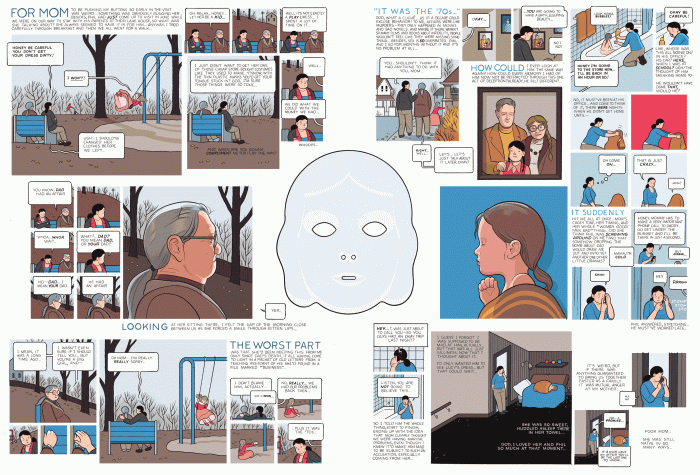Chris Ware is sort of the anti-Hergé.
He follows Hergé in two major respects. First, there’s the the clear-line style of drawing, which Ware seems to become closer to as his career develops — early on (in Jimmy Corrigan, e.g.) his lines are far thicker than Hergé’s. Second, the use of flat, smooth, often muted colors (Ware’s general palette seems to be close to Hergé’s nighttime and darkened-room scenes, though The Last Saturday is really bright, except for the gray hair of its precocious-child protagonist).
But in other respects he seems to be Hergé’s opposite:
| Hergé | Ware |
|---|---|
| action | inaction |
| variety | repetition |
| buoyancy | depression |
| strong narrative arc | non-linear scenes |
| visual flow | geometrical rigidity |
The chief interest of Ware’s art lies in the contrast between the obsessively neat, relentlessly balanced character of his drawing — it’s noteworthy that so many people assume that his work is drawn on computers, when in fact it’s done by hand (meticulously, and with frequent use of rulers and protractors) — and the chaotic, painful lives of his characters. Taken on their own, the words and thoughts of his characters would be monotonous, tedious — unreadable, I think; certainly of limited interest at best. Yet the placement of these stunted emotional lives into such an orderly, rational visual world creates an eerie, almost jarring dissonance that itself, perceived as a whole, is a kind of spiritual environment. That many of Ware’s characters are children, or appear to be children, and that so many of his artistic models are commercial art for children, adds to this eeriness.
I started making these notes because I thought I was going to write a long essay about Ware, but I’ve gotten stuck. And what I’ve gotten stuck on is this: I don’t know whether Chris Ware’s work has any substantial value.

